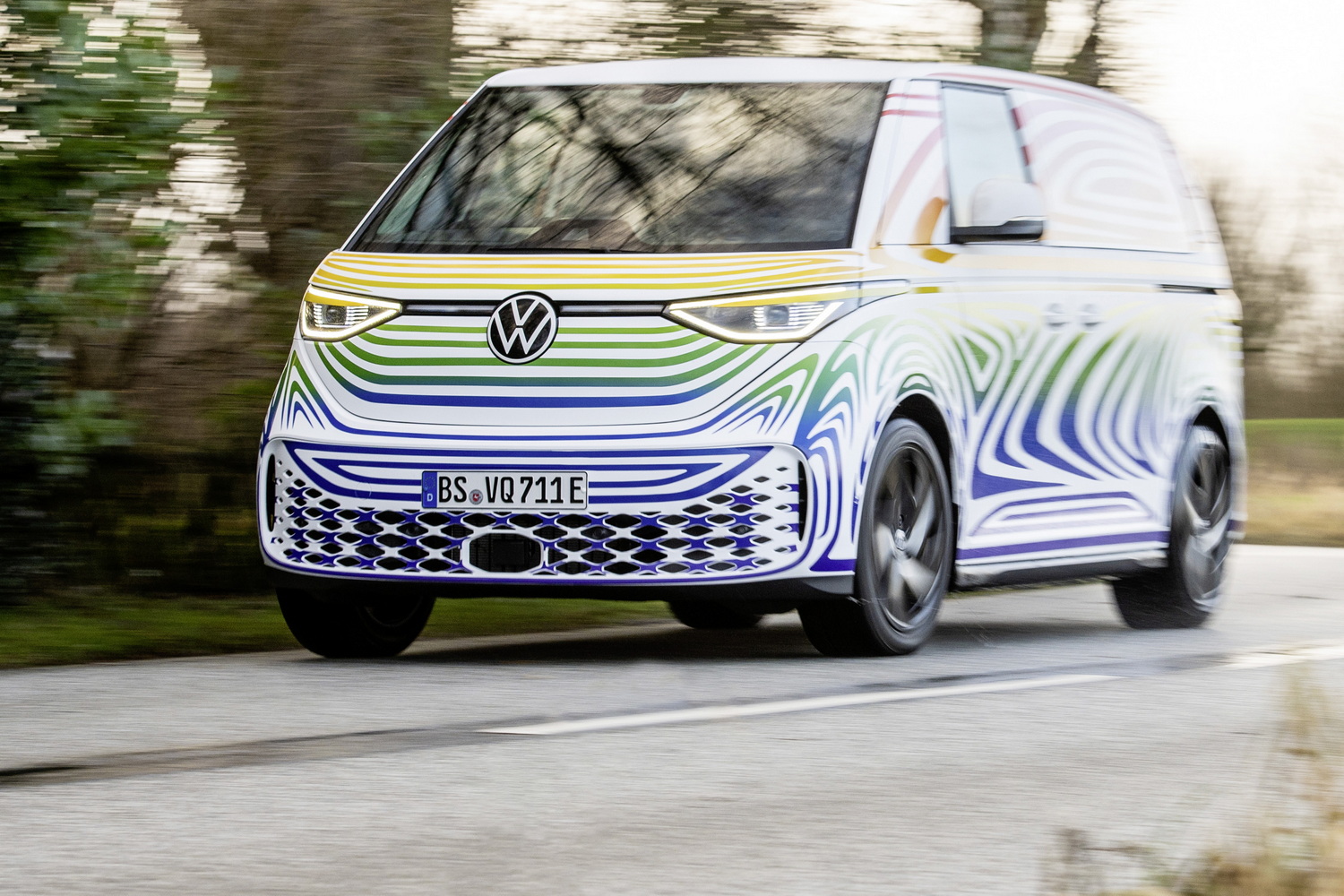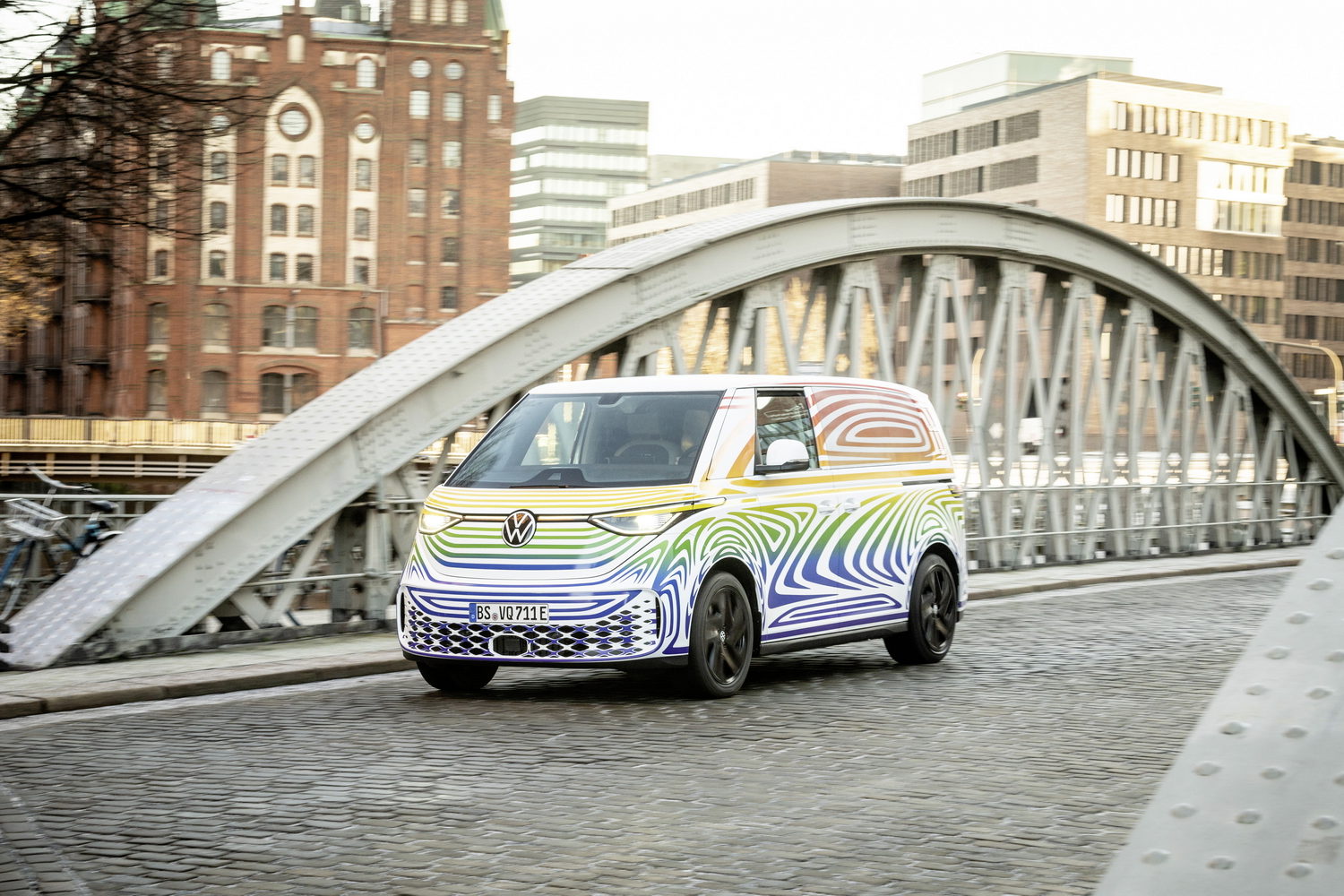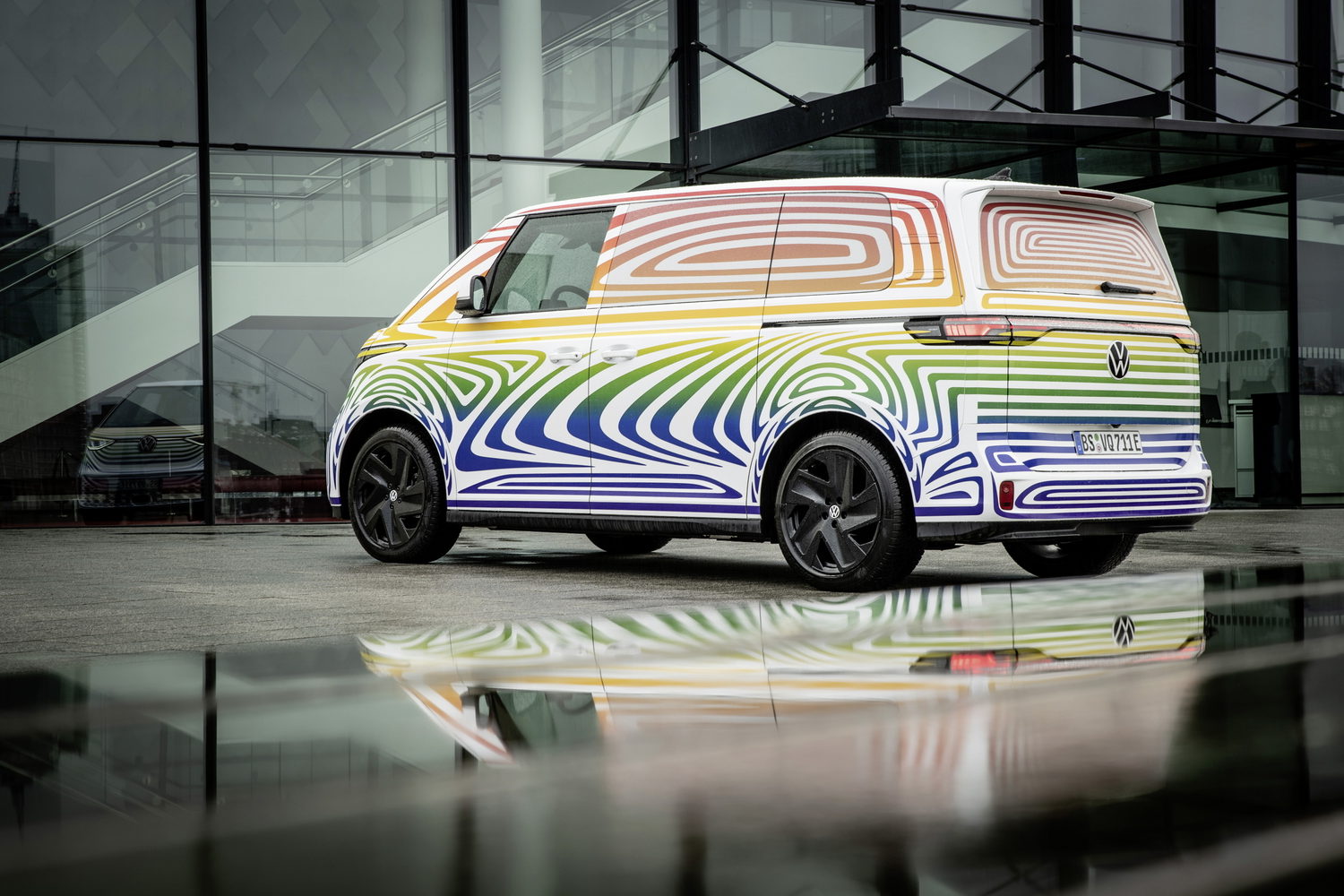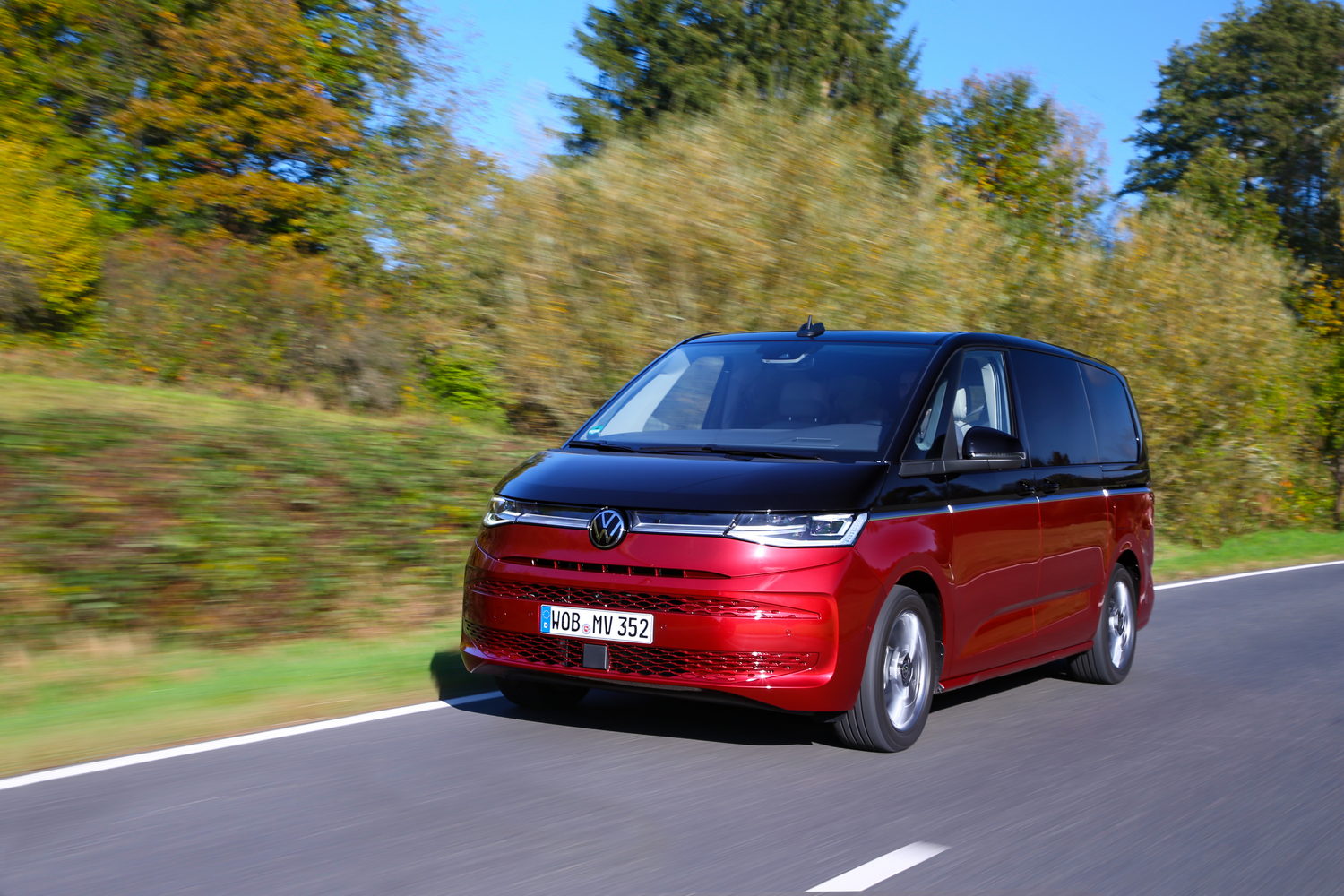A spiritual replacement for the much-loved original VW T1 (variously called and referred to as the Bus, Bulli, Transporter, Kombi, Microbus and more) has been a very long time coming. In 2001, a petrol-powered concept called the Microbus was revealed and the fans were certain it would become a reality. It never did.
Then, in 2017, Volkswagen whipped the covers off a new concept, powered by electricity and called the I.D. Buzz, and the frenzy started again. That has metamorphosised into a showroom-ready vehicle that will be fully unveiled in a matter of weeks. Before we see what the finished product looks like, Volkswagen allowed us a brief test drive in a lightly camouflaged, pre-production version.
In the metal
Volkswagen is keeping the final design of the showroom-bound ID.Buzz under wraps for the moment, so you'll have to squint to work out the detailing under the rainbow-coloured camouflage wrap of our test car. It would appear to be a relatively conservative and contemporary take on the original's style, with a few flourishes here and there - such as the design detail in the D-pillar that harks back to the air vents in the T1, plus of course the oversized VW badge on the front. It's also expected that buyers will have the option of a two-tone paint finish.
What we can tell you is that the ID.Buzz is a very large car. It's 4,712mm long, 1,937mm tall, 1,985mm wide (excluding the big door mirrors) and it has a 2,988mm wheelbase. To put that all into context, the Volkswagen ID.4 is 128mm shorter, 301mm lower, 133mm narrower and has a 233mm shorter wheelbase. The Volkswagen T6.1's wheelbase is only two millimetres longer than the ID.Buzz's as well, yet the latter is nearly 200mm shorter overall, backing up the 'wheel at each corner' stance, which should be to the benefit of interior space.
And while we're not allowed show you what the cabin looks like as yet, we can describe it. The dashboard is a relatively simple affair, sharing its main components with other VW ID models, including an upright central touchscreen, finger slider controls and a relatively small digital instrument pack in front of the driver.
The twist selector for drive usually found on the ID.3 and ID.4 has been replaced by a similar item moved to the steering column, though the less-than-perfect door controls are carried over.
There's no denying the sense of space inside the ID.Buzz, though - it feels huge, helped by the tall roof, which allows for a distinctly high-set seating position for driver and passengers alike. Rear access is via a sliding door on each side (optionally powered) and in the five-seat model we tried, the rear accommodation is generous to say the least. There's a flat floor with plentiful space for stretching out, while the width of the cabin allows three average-sized adults to fit in.
Saying that, our test car featured only two ISOFIX mountings in the back, with none in the middle seat, which seems like a missed opportunity for the vehicle. Hopefully there will be other versions with an option for that. We do know that a seven-seat ID.Buzz will follow on from the five-seat launch variant.
Behind those rear seats is a gargantuan load space, measuring 1,121 litres.
Driving it
Volkswagen hasn't confirmed the weight of the ID.Buzz, but there's no doubt it'll be heavier than the ID.4 it shares its rear-mounted electric motor with. Nonetheless, with two people on board, that motor's 204hp and 310Nm of torque were more than ample for us to make brisk progress on a test route that took in a little urban driving, a short section of motorway and an interesting country road, too.
The latter's surface was far from perfect, revealing that in the specification of our test car - sitting on 20-inch alloy wheels and winter tyres - the ride comfort wasn't as impressive as might be expected. Overall bump absorption was good, but there was also a degree of vibration through the chassis over the poorer sections of road.
Nonetheless, the ID.Buzz is incredibly refined, with no noise from the powertrain and well-contained wind road and road rumble at motorway speed.
A final point of note is the car's turning circle. It's laughably good, making it a cinch to park and manoeuvre the ID.Buzz despite its considerable size.
What you get for your money
Launching in Ireland later in 2022, it would appear that the ID.Buzz will be priced from just under €60,000. It's likely to be well-equipped as standard, but even so that's a high price when compared with similar vehicles already on the market - even if most of them aren't as interesting to look at or drive. VW will be hoping that buyers instead compare it with electric SUVs with a lot less space inside.
Volkswagen has confirmed that there will be a seven-seat option, and that there will also be an all-wheel-drive GTX model, most likely using the ID.4 GTX's 299hp powertrain. At the other end of the scale, it's likely that a variant with a smaller battery will be produced - though its availability in Ireland has yet to be confirmed.
Summary
Until the covers come off, we won't know if Volkswagen has truly managed to capture the style of the original Bulli in the ID.Buzz, but that aside, it has undoubtedly created an incredibly useful electric vehicle. The big question is whether its image will be desirable enough to convince scores of buyers that it makes for a viable alternative to the default SUV.























